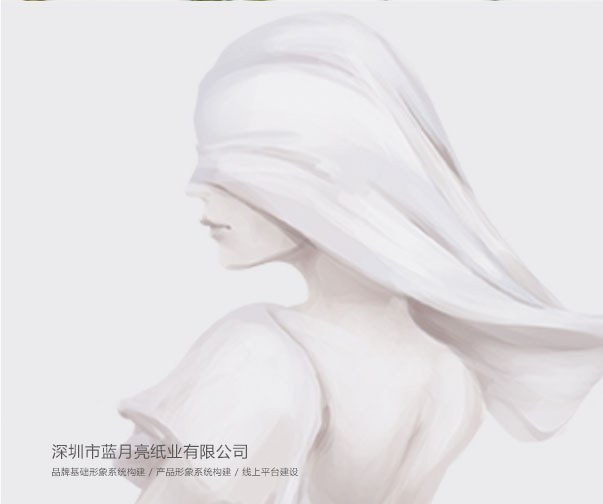The Indian Hygiene Market Exhibits Huge Potential
Growing population, low penetration rates have peaked the interest of hygiene manufacturers.
不斷增長(zhǎng)的人口,較低的普及率使衛(wèi)生用品制造商的興趣達(dá)到頂峰。
(8).png)
In recent years, India, with a 1.3 billion population and booming economy, has become a hot investment destination for global investors. From international giants to Chinese manufacturers, industrial players from a wide range of markets have expanded their footprints there, and the disposable hygiene market is no exception. All the big international hygiene product brands like Procter & Gamble, Johnson & Johnson, Kimberly-Clark and Unicharm have established facilities or operated branches in India.
近年來,擁有13億人口和蓬勃發(fā)展的經(jīng)濟(jì)的印度成為全球投資者的熱門投資目的地。從國際巨頭到中國制造商,來自各個(gè)市場(chǎng)的行業(yè)參與者都在那里擴(kuò)大了自己的足跡,一次性衛(wèi)生用品市場(chǎng)也不例外。所有大型國際衛(wèi)生用品品牌,如寶潔、強(qiáng)生、金佰利和尤妮佳,都在印度建立了工廠或經(jīng)營(yíng)分支機(jī)構(gòu)。
The continuous improvement of literacy rates, the enhancement of consumers’ safety and sanitary consciousness, and extended lifespan, plus improvements in conditions in rural areas, have all created opportunities for expansion of the hygiene market. The Indian people want to improve their living standard and incomes. They have increased the percentage of working females and upgraded consumers’ consumption habits. These factors will help to fuel the development of disposable hygiene markets.
識(shí)字率的不斷提高,消費(fèi)者安全和衛(wèi)生意識(shí)的增強(qiáng),壽命的延長(zhǎng),加上農(nóng)村條件的改善,都為擴(kuò)大衛(wèi)生市場(chǎng)創(chuàng)造了機(jī)會(huì)。印度人民希望提高他們的生活水平和收入。她們提高了女性就業(yè)比例,提升了消費(fèi)者的消費(fèi)習(xí)慣。這些因素將有助于推動(dòng)一次性衛(wèi)生用品市場(chǎng)的發(fā)展。
The India tissue paper and hygiene product market will grow significantly,the strong demand mainly comes from the increasing income of countryside consumers and their pursuing of more comfortable and convenient lives.
印度的生活用紙和衛(wèi)生用品市場(chǎng)將大幅增長(zhǎng),這種強(qiáng)勁的需求主要來自于農(nóng)村消費(fèi)者收入的增加和對(duì)更舒適便捷生活的追求。
India occupies 2.3% of the world’s land area, and English is the official language. Its popularization provides India with a big advantage in economic and trade cooperation with other countries. Among its population, 72% are literate, 21.8% live below the poverty line and 31% live in urban areas. Urbanization has progressed at 2.4% every year.
印度占世界陸地面積的2.3%,英語是官方語言。它的普及為印度與其他國家的經(jīng)貿(mào)合作提供了很大的優(yōu)勢(shì)。在人口中,72%的人識(shí)字,21.8%的人生活在貧困線以下,31%的人生活在城市地區(qū)。城鎮(zhèn)化以每年2.4%的速度推進(jìn)。
A lot of Indian consumers are changing their consumption habits, with more people willing to spend. In the next 20 years, India’s business environment will improve dramatically, with key focus on sectors that closely connect to people’s daily lives, including healthcare, food, education, housing, infrastructure construction, etc.
許多印度消費(fèi)者正在改變他們的消費(fèi)習(xí)慣,越來越多的人愿意花錢。未來20年,印度的商業(yè)環(huán)境將大幅改善,重點(diǎn)關(guān)注與人們?nèi)粘I蠲芮邢嚓P(guān)的行業(yè),包括醫(yī)療、食品、教育、住房、基礎(chǔ)設(shè)施建設(shè)等。
Nitin Bawankule, the industrial director of Google India, further pointed out that in the next five years, as the percentage of female users grows from 30% to 40%, female purchasers will drive online purchasing significantly. This is another important factor to foster India’s future change.
谷歌印度產(chǎn)業(yè)總監(jiān)Nitin Bawankule進(jìn)一步指出,未來五年,隨著女性用戶比例從30%增長(zhǎng)到40%,女性購買者將顯著推動(dòng)在線購物。這是促進(jìn)印度未來變化的另一個(gè)重要因素。
As consumer consumption continues to rise in India, the mother and baby market will be another booming sector that may experience explosive growth rates. When this same demographic becomes wives and mothers, they will help increase e-commerce sales. According to a report, the India maternal and infant market will grow 17-18% to $20 billion. On-line and off-line retailers are very interested in this “big cake.” It is expected that the next retailing battle will be staged on this market. These factors will boost the growth of the Indian hygiene market.
隨著印度消費(fèi)者消費(fèi)的持續(xù)增長(zhǎng),母嬰市場(chǎng)將成為另一個(gè)蓬勃發(fā)展的領(lǐng)域,可能會(huì)經(jīng)歷爆炸式的增長(zhǎng)。當(dāng)同樣的人群成為妻子和母親時(shí),他們將有助于提高電子商務(wù)的銷售額。根據(jù)一份報(bào)告,印度母嬰市場(chǎng)將增長(zhǎng)17-18%,達(dá)到200億美元。線上和線下零售商都對(duì)這個(gè)“大蛋糕”非常感興趣。預(yù)計(jì)下一場(chǎng)零售大戰(zhàn)將在這個(gè)市場(chǎng)上演。這些因素將促進(jìn)印度衛(wèi)生市場(chǎng)的增長(zhǎng)。
For example, Amazon has increased its SKU of infant consumer goods (0-2 years old) to 160,000, including diapers. Saurabh Srivastava, the head of Fast Moving Consumer Goods, Amazon India, said the sales of infant consumer goods increased 300% last year. “Infant product is about to be one of the top five best sellers worldwide, and consumers of this category show the highest brand loyalty.”
例如,亞馬遜將嬰兒消費(fèi)品(0-2歲)的SKU增加到16萬,其中包括尿布。亞馬遜印度快速消費(fèi)品部門負(fù)責(zé)人索拉布·斯里瓦斯塔瓦表示,去年嬰兒消費(fèi)品的銷售額增長(zhǎng)了300%。“嬰兒產(chǎn)品即將成為全球五大暢銷產(chǎn)品之一,這一類別的消費(fèi)者表現(xiàn)出最高的品牌忠誠度。”
Feminine Hygiene | 女性衛(wèi)生用品
Feminine sanitary products account for a significant proportion of the Indian disposable hygiene market. According to Euromonitor, the Indian feminine hygiene product market has reached 22.21 billion Rupee ($340 million) and is expected to reach 34.68 billion Rupee ($522 million) in 2020. Euromonitor pointed out that manufacturers should work along both lines—attract young consumers through online purchases while at the same time penetrating small towns and rural markets.
女性衛(wèi)生用品占印度一次性衛(wèi)生用品市場(chǎng)的很大比例。根據(jù)歐睿的數(shù)據(jù),印度女性衛(wèi)生用品市場(chǎng)已經(jīng)達(dá)到222.1億盧比(3.4億美元),預(yù)計(jì)到2020年將達(dá)到346.8億盧比(5.22億美元)。歐睿指出,制造商應(yīng)該雙管同下——通過網(wǎng)上購物吸引年輕消費(fèi)者,同時(shí)打入小城鎮(zhèn)和農(nóng)村市場(chǎng)。
The upper class of Indian women are trying to find high quality hygiene products, however, in poor rural areas, many women still haven’t start to use sanitary napkins. In the past, Indian women used to use fabrics during their menstruation period. In fact, 70% of women use rags because of poverty and lack of knowledge.
印度上層階級(jí)的女性正在努力尋找高質(zhì)量的衛(wèi)生用品,然而,在貧窮的農(nóng)村地區(qū),許多女性還沒有開始使用衛(wèi)生巾。過去,印度婦女在經(jīng)期使用織物。事實(shí)上,70%的婦女使用破布是因?yàn)樨毟F和缺乏知識(shí)。
Being aware of the problem, the government has started to take measures to promote sanitary products in poor areas. Today, sanitary napkins are increasingly getting popular among women. Of course, continuous education and marketing from big international brands has significantly contributed to this penetration.
意識(shí)到這個(gè)問題,政府已經(jīng)開始采取措施在貧困地區(qū)推廣衛(wèi)生產(chǎn)品。如今,衛(wèi)生巾在女性中越來越受歡迎。當(dāng)然,國際大品牌的持續(xù)教育和營(yíng)銷對(duì)這種滲透做出了重大貢獻(xiàn)。
What needs to be noted is that India has invested little in the research and development of sanitary napkins. Although upper class females hope to have higher quality products, there are no innovative products available. Today, 95% of India’s sanitary napkin market share goes to international companies like P&G and Johnson & Johnson.
需要注意的是,印度在衛(wèi)生巾研發(fā)方面的投資很少。雖然上流社會(huì)的女性希望擁有更高質(zhì)量的產(chǎn)品,但沒有創(chuàng)新的產(chǎn)品。如今,印度95%的衛(wèi)生巾市場(chǎng)份額被寶潔(P&G)和強(qiáng)生(Johnson & Johnson)等跨國公司占據(jù)。
Baby Diapers | 嬰兒紙尿褲
Indian infants between 0-2, there is huge market potential for baby diapers. However, this market penetration is very low, only 7.6%. People in the countryside mainly use cloth diapers. People are concerned about disposable diapers since Indian society doesn’t recognize these kind of products. In addition, the cost for potty training and baby care is also quite low.
印度0-2歲的嬰兒紙尿褲的市場(chǎng)潛力巨大。然而,這一市場(chǎng)滲透率非常低,只有7.6%。農(nóng)村人主要用布尿布。人們很擔(dān)心一次性尿布,因?yàn)橛《壬鐣?huì)不認(rèn)可這類產(chǎn)品。此外,如廁訓(xùn)練和嬰兒護(hù)理的費(fèi)用也相當(dāng)?shù)汀?/div>
High end hospitals in India started to provide diapers for infants. The sales of disposable diapers in retail also helped the market to grow. The rigid market demand is robust, and international companies including P&G, Unicharm and Kimberly-Clark still hold 92% of the Indian diaper market. In the past couple of years, the market share of Kimberly-Clark started to drop.
印度的高端醫(yī)院開始為嬰兒提供尿布。一次性紙尿褲的零售銷售也促進(jìn)了市場(chǎng)的增長(zhǎng)。剛性市場(chǎng)需求強(qiáng)勁,寶潔、尤妮佳、金佰利等跨國公司仍然占據(jù)著印度紙尿褲市場(chǎng)92%的份額。在過去的幾年里,金佰利的市場(chǎng)份額開始下降。
Based on their comprehensive analysis of baby diaper sales in India, relevant organizations pointed out that the market size will be 47 billion pieces per year, which is very promising.
相關(guān)機(jī)構(gòu)根據(jù)他們對(duì)印度嬰兒紙尿褲銷售的綜合分析指出,市場(chǎng)規(guī)模將達(dá)到每年470億件,前景非常廣闊。
Adult Diapers | 成人紙尿褲
The population older than 65 in India was 21 million. The usage of adult diapers in India is very low, and only accounts for 0.6% of the total hygiene market share; however, the demand of nursing pads started to increase.
印度65歲以上的人口為2100萬。印度成人紙尿褲的使用率非常低,僅占衛(wèi)生用品總市場(chǎng)份額的0.6%;然而,對(duì)護(hù)墊的需求開始增加。
Taking care of the elderly population is increasingly an acute social challenge. Although the adult diapers market in India started at a low development level, it has grown rapidly. The continuous construction of international hospital chains helped many diaper manufacturers to promote their brands across India. Today, 70% of adult diapers are sold through hospitals and their affiliated stores, which are welcomed by Indians. The majority of adult diapers are diapers, pads, and nursing pads. Indian senior centers are also starting to promote adult diapers.
照顧老年人口日益成為一項(xiàng)嚴(yán)峻的社會(huì)挑戰(zhàn)。雖然印度成人紙尿褲市場(chǎng)起步較低,但發(fā)展迅速。國際連鎖醫(yī)院的不斷建設(shè),幫助許多紙尿褲制造商在印度各地推廣其品牌。如今,70%的成人紙尿褲是通過醫(yī)院及其附屬商店銷售的,這受到了印度人的歡迎。大多數(shù)成人尿布是尿布、護(hù)墊和護(hù)理墊。印度老年中心也開始推廣成人紙尿褲。
Currently, there are no international companies producing adult diapers locally. However, international manufacturers like Unicharm, Procter & Gamble, and local manufacturers like Emami Group, Rohit Group, Surfactants Limited, Mangal Textile Mills (India) Pvt. Ltd., Nobel Hygiene Ltd., and Walmart all show great interest in the market.
目前,國內(nèi)還沒有生產(chǎn)成人紙尿褲的國際公司。然而,像尤妮佳、寶潔這樣的國際制造商,以及像Emami Group, Rohit Group, Surfactants Limited, Mangal Textile Mills (India) Pvt. Ltd., Nobel Hygiene Ltd.,和沃爾瑪這樣的本地制造商都對(duì)這個(gè)市場(chǎng)表現(xiàn)出了極大的興趣。
來源:衛(wèi)品屁事通








